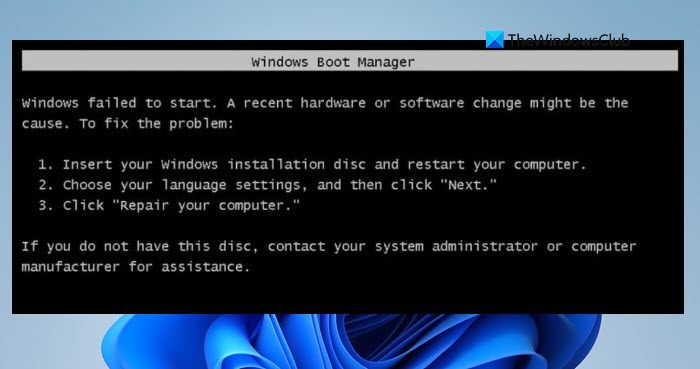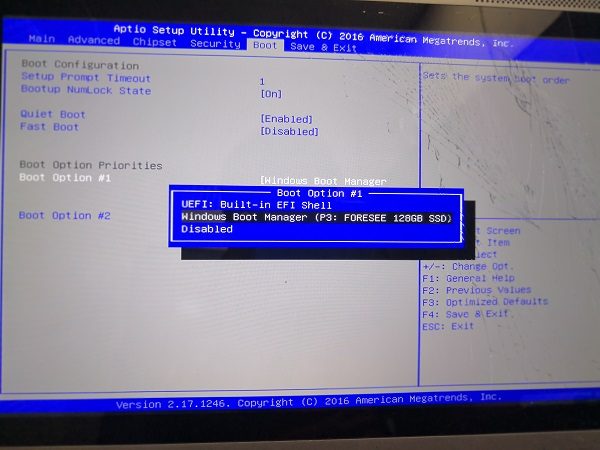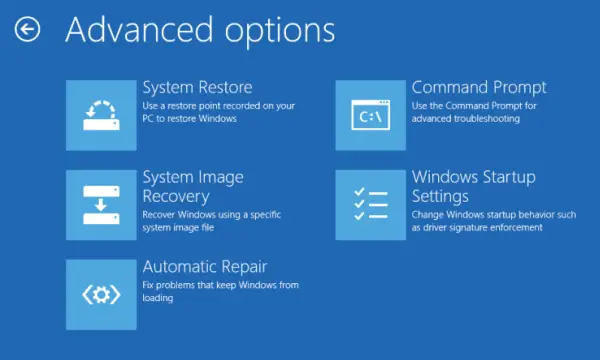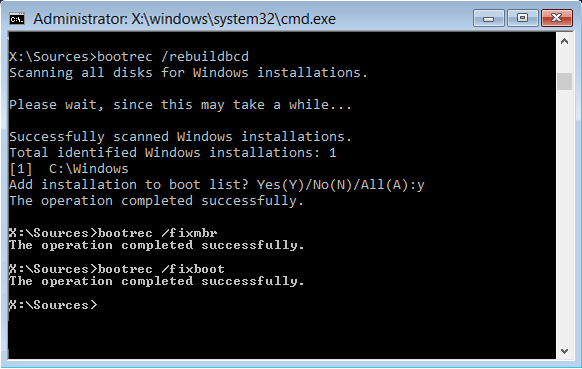Sometimes, the boot loader is unable to decipher what to do when the system has hardware or software change, hence, it just fails to start the operating system. In this post, we will discuss what to do if Windows fails to start and a recent hardware or software change might be the cause.
Windows failed to start. A recent hardware or software change might be the cause

Windows failed to start; A recent hardware or software change might be the cause
It is very likely that, in your case, the Windows Boot Manager might say “Windows failed to start. A recent hardware or software change might be the cause” if the bootloader is missing or the hardware is not connected properly. You will need to make a bootable USB drive to boot into advanced recovery since you won’t be able to boot into your computer. Once done, try the following solutions and suggestions to resolve the issue.
- Set Correct Boot Order
- Check Hardware
- Automatic System Repair
- Rebuild BCD
You will also need an admin account in one of the processes so make sure you remember that.
1] Set Correct Boot Order

When Windows starts, the bootloader looks for a set of files from where it can start loading Windows. If it will not find the right files, Windows will not load. You need to make sure that the default bootable drive is your SSD or HDD. When it’s not set as default, and you have a USB drive connected, Windows will be stuck. So boot into the BIOS using DEL or F2 key when you power up the computer, and change the order.
2] Check Hardware
If there is no Boot Order problem, you can check if there is an issue with the Hard drive. The first thing you should check the BIOS can detect it. If it does, then you need to check it with another computer. If the hard drive or SSD cannot be recognized, you have a hardware issue.
In case you are facing this on a laptop, you need to manually take it out, and check. If it voids your warranty. please take it to the service center, and do not open it yourself.
3] Automatic Startup Repair

Windows Advanced Recovery offers an Automatic Repair feature (Startup Repair) that scans system files, Registry settings, configuration settings, and more and tries to fix the problem on its own, automatically. It usually starts automatically if the reboot process is interrupted multiple times.
You can use a bootable USB drive to boot into Recovery.
You will have to select Troubleshoot > Advanced Options > Automatic Repair. Enter account details when prompted, and let the process do its job. Post this, you can reboot the computer, and check if the error still remains.
4] Rebuild BCD

BCD or Boot Configuration Data contains information that allows the bootloader to find the right files to boot Windows. If BCD is corrupt or doesn’t have information then Windows gets stuck. Follow the steps to rebuild BCD:
- Boot your computer into Advanced Recovery Mode
- Launch Command Prompt available under Advanced Options.
- To rebuild the BCD or Boot Configuration Data file use the command –
bootrec /rebuildbcd - It will scan for other operating systems and let you select the OS you want to add to BCD.
If it doesn’t find the boot partition, you can use bootrec /scanos it to find the list of the partitions where the OS is installed. Then use the bcdboot command to add it to the list. More about BCD configuration editor here. Once the path is set, reboot the computer, and the error should not occur anymore.
You can also try to fix MBR or Master Boot Record by executing the commands in the Command Prompt bootrec/fixMbr and bootrec /fixboot.
I hope the post was easy to follow, and that you were able to fix the problem.
Read: Fix Windows Services will not start
How to fix when Windows failed to start?
If Windows fails to start for you, the first thing you should do is run Startup Repair. It will scan system files, Registry settings, configuration settings, and more and try to fix the problem automatically. You can check the aforementioned steps to do the same.
How to fix Windows failed to start without disc?
If Windows fails to start without a disc, we recommend you repair the Windows installation using the bootable Installation USB. For this, you would require a separate computer to create a bootable drive. Check our guide to repair system images using Installation Media.
Also Read: Fix Task Scheduler failed to start, Event ID 101.